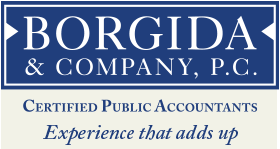The Internal Revenue Service (“IRS”) allows taxpayers to choose between the Standard Mileage Method and Actual Expenses.
Standard Mileage Method
The IRS allows taxpayers to deduct a standard mileage method for business travel. The current allowance is for 55.5 cents per mile. This allowance is updated periodically to reflect changes in gas prices and other changes. Keep in mind this allowance is just for business travel. There is no deduction allowed for commuting and other personal travel.
It’s important to keep good records to support your business travel. If a return is selected for audit, the first place the auditors look at is travel and entertainment.
Actual Expenses
Instead of taking the Standard Mileage Method, taxpayers are allowed to deduct actual expenses. Actual expenses would include gas, repairs, insurance, loan interest and taxes. Additionally depreciation expense would be allowed on the vehicle. Like the Standard Mileage Method, no deduction is allowed for commuting or other personal travel. For example, if a taxpayer drove 9,000 miles for business and 3,000 miles for commuting and personal, they would be entitled to deduct 75% of their actual expenses.
Vehicles are depreciated over 5 years. There is an annual dollar limit on passenger vehicles. For 2012 the cap on depreciation for passenger vehicles depreciation placed in service in 2012 is $3,160. There are also annual dollar limitations on the amount of depreciation allowed in subsequent years.
Taxpayers need to be careful which method they select in their first year. If they choose actual expenses, they must use that method for the entire life of the car. If they choose the standard mileage method in the first year, they can continue with this method or change to actual expenses at some point in the future.
Leased Vehicles
For vehicles that are leased, there is an additional consideration. Like other methods, there is no deduction for commuting or other personal use. The actual expenses including the lease payment would be multiplied by the business use percent. However, there would also need to be an adjustment for what’s called lease inclusion income. The IRS publishes a chart for this. Taxpayers must declare some income based on the fair market value of the vehicle.
ACTION ITEM: Taxpayers need to understand the Difference Between The Standard Mileage Method and Actual Expenses.


